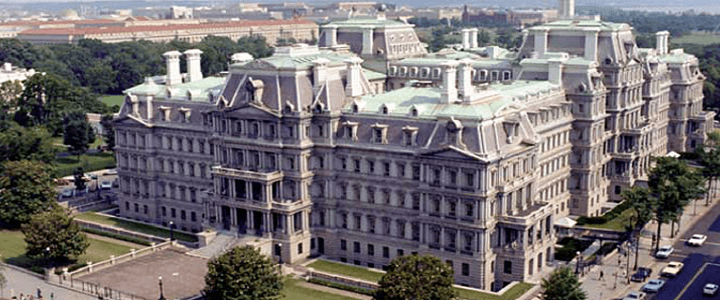Editor’s Note: The Senate convened late Wednesday afternoon with only one item on its calendar. But shortly after opening the session, Senators confirmed 77 Trump nominations, all on voice votes. These confirmations included one in the Department of Defense, two in the Department of the Army, and several ambassadors.
The 115th Congress adjourned Wednesday evening with lots of unfinished business on the table. While the lack of appropriations for about 25 percent of the federal government took center stage, the bigger story is the unfilled positions in the executive branch.
There’s a fair case to be made that congressional Republicans very publicly opposed then President Obama’s judicial nominations, particularly later in his presidency, culminating in Senate Majority Leader Mitch McConnell’s refusal to take up the Supreme Court nomination of Judge Merrick Garland.
But what they demonstrably did not do is prevent him from staffing his administration with the people he wanted. So when Trump tweeted on New Year’s Eve that “Heads of countries are calling wanting to know why Senator Schumer is not approving their otherwise approved Ambassadors!?” he had a legitimate gripe. The president put the number of unconfirmed nominees at 360, but by my own analysis, it’s actually 374… although there may be a few people who are nominated for two positions making 360 the more accurate number.
While commenters were quick to point out that for some time it has only taken a simple majority in the Senate to confirm a presidential appointee, that doesn’t tell the whole story. Because of the Senate’s arcane rules, one Senator can hold up a nomination indefinitely. That’s what’s going on here. And it’s truly unprecedented.
Backlog of nominations must start over
As of yesterday, the Senate had received 1,158 nominations for its advice and consent since convening on January 3, 2017. Twenty-two of those were last-minute Obama nominations that Trump withdrew after taking office on January 20. Of the remaining 1,136, the Senate has confirmed only 636. The president withdrew another 36, and the Senate returned 90 more at the end of the first session of the Congress. The president will have to resubmit the other 374 names after the new Senators are sworn in today.
The obstructionism started a year ago. Senate rules require that any incomplete nomination be returned to the president at the end of a session. But by unanimous consent, the Senate can waive that rule and allow the nomination to continue from the first half to the second half of a two-year Congressional session. At the end of his first year in office, Obama had to resubmit only seven of his outstanding nominees. It’s hard to blame Trump’s slow start to making the nominations when Obama continued to submit nominations regularly through December.
At the end of his first two years, Obama was forced to deal with 176 unfinished confirmations. Any Republican in December 2007 could have forced the president to resubmit every outstanding nomination, but this happened with just seven nominees, versus 90 for Trump. Today, Trump has more than twice the number of unconfirmed nominees compared to Obama at the same point in his administration.
The secret practice of “holds”
Why then, if nominees no longer need 60 votes to gain confirmation, is there so much unfinished business? The answer lies in another arcane Senate rule that permits Senators to “hold” any bill or nomination, all alone and largely in secret.
Here’s how a Congressional Research Service report, last updated in January 2017, described the process:
The influence that holds exert in chamber deliberations is based primarily upon the significant parliamentary prerogatives individual Senators are afforded in the rules, procedures, and precedents of the chamber. More often than not, Senate leaders honor a hold request because not doing so could trigger a range of parliamentary responses from the holding Senator(s), such as a filibuster, that could expend significant amounts of scarce floor time. As such, efforts to regulate holds are inextricably linked with the chamber’s use of unanimous consent agreements to structure the process of calling up measures and matters for floor debate and amendment.
Bringing a measure to the floor over a Senator’s hold can trigger a host of procedural steps that waste otherwise valuable floor time. Senator’s are supposed to register their holds in writing, but that doesn’t always happen. The “Notice of Intent of Object” section of the Senate Executive Calendar, lists only two holds: one from Sen. Tammy Duckworth (D-Ill.) regarding a judicial nomination, and one from Sen. Charles Grassley (R-Kan.), over William Evanina’s nomination to be director of the National Counterintelligence and Security Center.
While these two public holds are evenly divided between Republican and Democrat, you will never convince me that this is the case for all of them. Any president deserves to be able to hire the people he wants. The advise and consent requirement exists for a very good reason, but it’s being abused. In the case of Merrick Garland, McConnell was open and upfront about his intentions, and that was for a lifetime appointment to the Supreme Court.
The same cannot be said for the current outstanding nominations—many of them for non-political career Foreign Service officers to serve as ambassadors to some the most critical spots in the world. There is really no valid excuse for the holdup. The Senate needs to act with speed to clear this backlog… as soon as the president resubmits the names.



